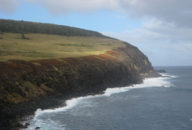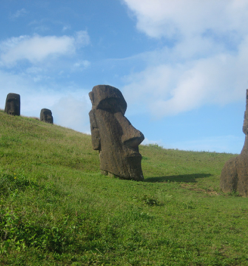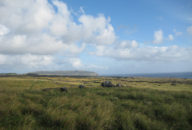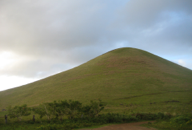Easter island
Rapa Nui, isla de pascua, chile
Easter Island, the pacific ocean


Easter island
Rapa Nui, isla de pascua, chile
Easter Island, the pacific ocean




Rapa Nui/Easter Island is located at the eastern extreme of the Polynesian triangle, in the middle of the Pacific Ocean and thousands of miles and kilometers away from any inhabited lands. It’s area is 171 square kilometers, or 106 square miles. A volcanic island, it is located 3,700 kilometers (2,300 miles) from Chile, and 2,600 kilometers (1,615 miles) from Mangareva, and 4,000 kilometers (2,485 miles) from Tahiti. The island has evolved in size and shape over millions of years, forming its current, triangular shape about 300,000 years ago. Measured from the ocean floor, Rapa Nui rises 3,000 meters (9,800 feet), formed by successive eruptions of three volcanoes: Polka, Rano Kau, and Maunga Terevaka. the surface area of Rapa Nui is 16,600 hectars (41,019 acres). The sides of the triangle measure 16, 17, and 24 kilometers in length, with a maximum width of 12 kilometers in width. Translated into miles, it would roughly equal the size of Martha’s Vineyard. The measurements in miles of each side of the triangular shape of Rapa Nui would equal approximate 10 miles x 10.5 miles x 15 miles. The maximum width at any point of the island is 7.5 miles. In our many conversations while motoring around Rapa Nui/Easter Island, Henry and I often exclaimed how totally shocked we were with the contrast between our vision of what Easter Island would be like, and what we actually saw and experienced. We finally saw the picture I had in my head, when we visited Rano Raraku, the stone quarry. There, we saw hundreds of heads on rolling green grass, all looking out to the sea. If I could have drawn a large circle around that quarry and its sculptures, making it the whole of Easter Island, then my vision would have been true. I had the preconceived idea that Easter Island was deserted, desolate, and denuded. I was shocked to find it had a village of 3,791 inhabitants (2002 recorded census), that scuba diving and surfing were big sports there, that men would ride through town on horseback, or canter at top speed along the highways. I hadn’t imagined that hundreds of horses, cattle, dogs, pigs, chickens and roosters would have free reign of any place, much less this island. I couldn’t imagine that a people could be so relaxed with their culture, their environment and their lifestyle that everything would be part of life, with few fences, or social structure, or a strict framework of law. It didn’t seem possible that there might be groves of eucalyptus trees, or wildflowers in fields. I didn’t think there would be “sealed” roads or rental cars. I thought Easter Island would be small enough to walk around, with maybe three hotels and a couple restaurants to fuel the tourists in this Unesco “outdoor museum”. Frankly, undoing my rather restricted idea of my “ideal” Easter Island was part of the fun. European eyes first fell on this land in 1722, when the Dutch explorer Jacob Roggeveen first “discovered it”. His idea, and the general consensus of European thought that followed in his wake was that “the stupendous stone statues were carved from solid rock, dragged to randomly selected sites along the coast, and erected in groups, in order to instill fear in would-be invaders, the island being incapable of sustaining a large population”* I loved learning that this idea that I, too, had adopted, was not the whole picture. These heads are no longer mysterious, and may have never been. The culture is well researched and is part of the patrimony of the island today. What was amazing to me is the variety of artifacts and ceremonial sites, plus the beauty of the terrain upon which these treasures rest. I loved knowing that archeologists have been studying this island for many decades, and the restoration of these sculptures and the various sites has been active since the 1960’s. The landscape, the volcanic craters, the mountain vistas, the surf and sky were so big and beautiful that it was a pleasure to walk upon it, view it, and be at peace with this understated beauty. Being able to meander around the island with our own wheels, at our own pace and with our own agenda felt so free and adventuresome, and fun!
*Hough, Richard. Captain James Cook, A Biography. Great Britain: Hodder & Stroughton, 1994 Pg, 289
PHOTOS: Scenes of landscape from all points on Easter Island.


The Unexpected Rapa Nui





